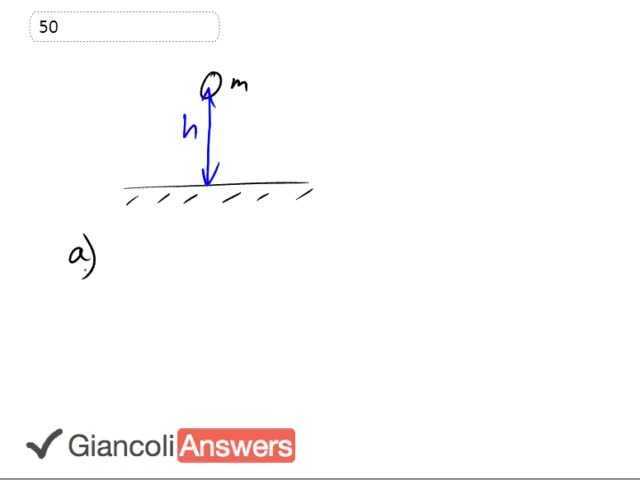

In order to watch this solution you need to have a subscription.
This baseball is dropped from a height ‘h’ and the part A question is the simple scenario where there’s no friction and what’s the final speed in that case? Well, I have the initial total energy which is only potential because there’s no speed initially is equal to the final kinetic energy because there’s no potential energy in the end. So we have ‘mgh’ equals one half ‘mv’ final squared. The question is what is that final speed? So I’ll multiply everything by 2 over ‘m’ and flip the sides around and square root as well. We get ‘vf’ is the square root of 2 ‘gh’ because the cancelled everywhere. And substituting in numbers we get 2 times 9.8 times 13 meters. This makes 15.96 or rather 16 meters per second with 2 [???]. That’s for part A. For part B we’re given a final speed which is a lot less than 16 and the difference is accounted for because friction has been doing some work and dissipating some of the energy. So not all of the initial potential turned into kinetic. Instead some of it just evaporated as thermal energy. So we know that the initial potential energy is the final kinetic energy plus whatever work was dissipated by friction. The work done by friction is the friction force times the distance over which friction is acting and that distance is the height of its fall. So we should really say friction force times ‘h’. So that friction force times ‘h’ is going to be equal the initial potential energy minus the kinetic energy. So we took this to the left side and solved for the friction work and substituted this for that. And we solve for the friction force now. So it’s going to be ‘mgh’ minus 0.5 times ‘vf’ squared factored at the end there. Always factor out if there’s an opportunity it just makes things look cleaner. And we’ll substitute in numbers. So we have 0.145 kilograms. That’s 145 grams times 9.8 times 13 meter fall minus 0.5 times 8 meters per second all squared divided by 13 meters and that equals 1.06 newtons is the average force on the ball while it’s falling due to friction.